2025 Mazda BT-50 On/Off-Road Review: A Stylish and Capable Ute for Every Adventure
The 2025 Mazda BT-50 has rolled into the scene with a fresh facelift, updated tech, and a bold new look that screams lifestyle appeal. Built on the same platform as the Isuzu D-Max, this ute combines Mazda’s signature design flair with rugged capability. Whether you’re a weekend warrior, a family driver, or someone who just loves a good-looking ride, the BT-50 promises to deliver. In this detailed blog, we’ll break down everything you need to know about the 2025 Mazda BT-50—its design, performance, off-road skills, interior upgrades, and more.
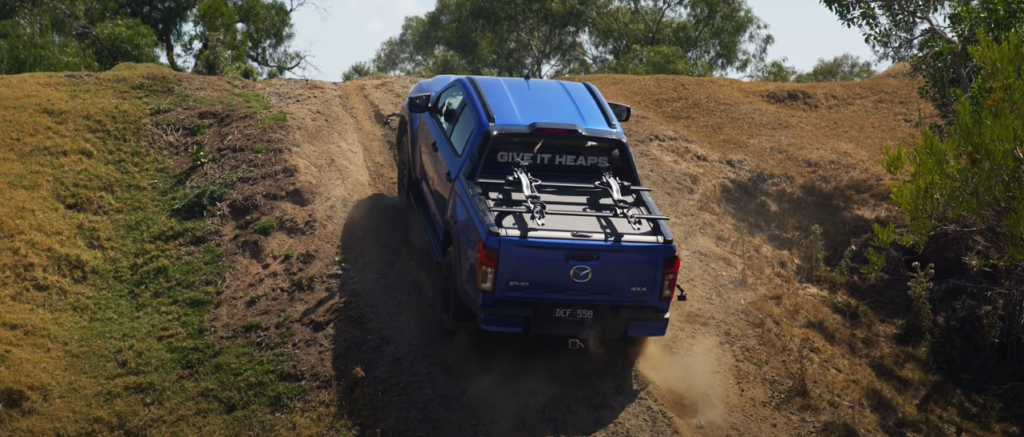
Overview of the 2025 Mazda BT-50: What’s New?
The Mazda BT-50 has been a solid contender in the ute market, and the 2025 update takes it up a notch. Priced from around $36,000 for the base model up to $77,000+ for the top-spec SP trim (as reviewed here), it’s clear Mazda is targeting a wide audience. The manual transmission is gone, leaving only a six-speed automatic across the range. This facelift isn’t just a minor tweak—Mazda has given the BT-50 a bold new face, updated infotainment, and a few practical enhancements to keep it competitive against rivals like the Toyota HiLux, Ford Ranger, and Isuzu D-Max.
Why should you care? If you’re in the market for a dual-cab ute that balances style, comfort, and capability, this review will help you decide if the BT-50 is worth your hard-earned cash. Let’s explore its standout features.
Exterior Design: A Fresh Mazda Family Face
The 2025 Mazda BT-50’s exterior is where the update shines brightest. Mazda has leaned hard into its “Kodo” design language, giving the BT-50 a massive grille that aligns it with models like the CX-5. The SP trim we tested rocks a striking red color (optional for about $700), paired with piano black accents and partial LED headlights. It’s a ute that looks more like a lifestyle vehicle than a tradie’s workhorse, and that’s intentional.
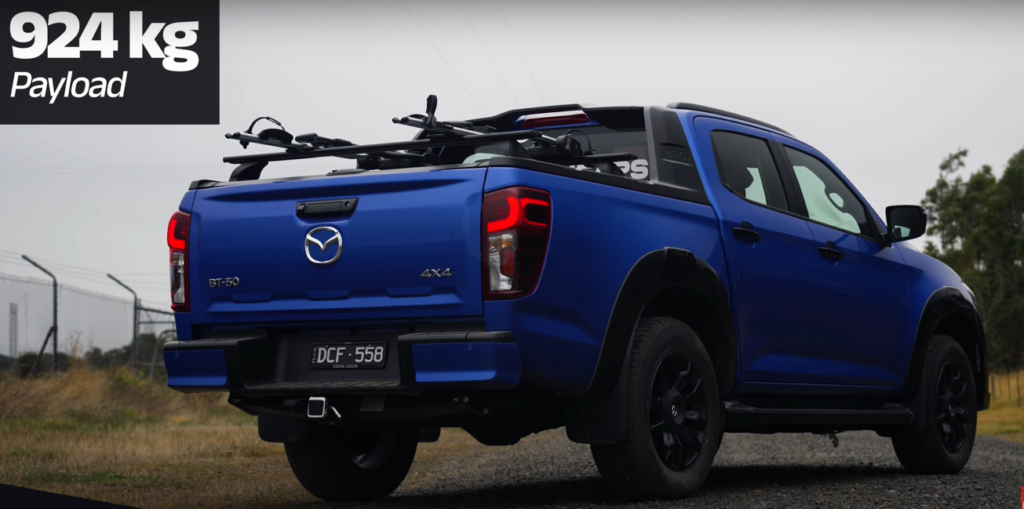
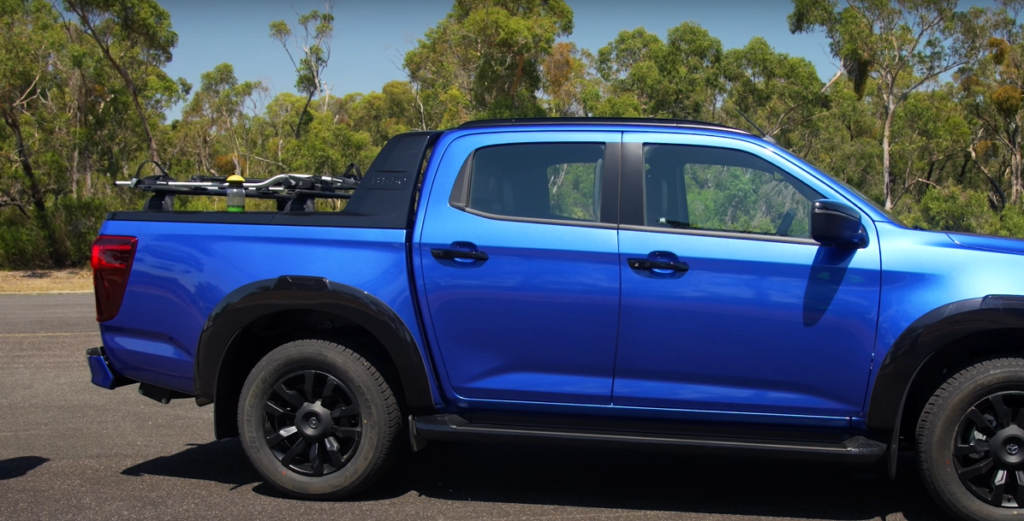
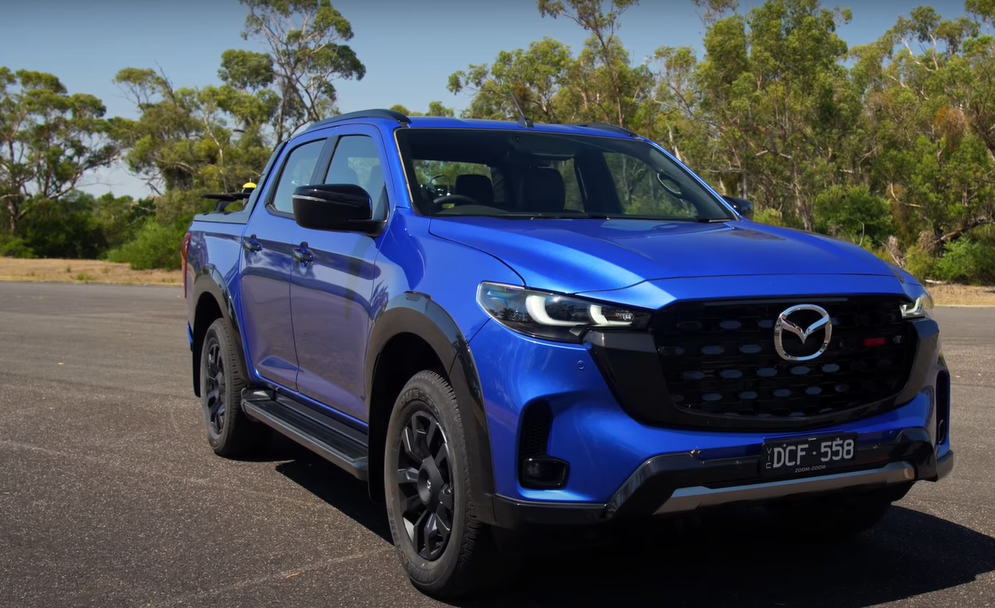
Key Design Highlights:
- Enormous Mazda logo (hand-sized!) on the grille.
- Red highlights tie it to Mazda’s SUV lineup.
- 18-inch alloy wheels with highway-terrain tires and a matte finish.
- Piano black wheel arch guards (though they scratch easily off-road).
- Side steps with a metallic finish for durability.
- Partial LED taillights and a 4×4 badge at the rear.
The design feels premium, but there are trade-offs. The piano black trim might not hold up to heavy off-roading, and there’s still no 360-degree camera—a miss for a top-spec model. The offset rear camera also makes trailer hookup trickier than it should be. Still, the BT-50 stands out in a sea of utes, and that’s a win for buyers who want something unique.
Interior: Comfort Meets Practicality
Step inside the 2025 Mazda BT-50 SP, and you’re greeted with a cabin that feels more car-like than truck-like. The seats feature Alcantara centers with red leather accents—premium touches for a ute in this price range. Soft-touch materials on the armrests and doors add to the comfort, while the build quality is mostly solid, though there’s a slight wobble in the center console.
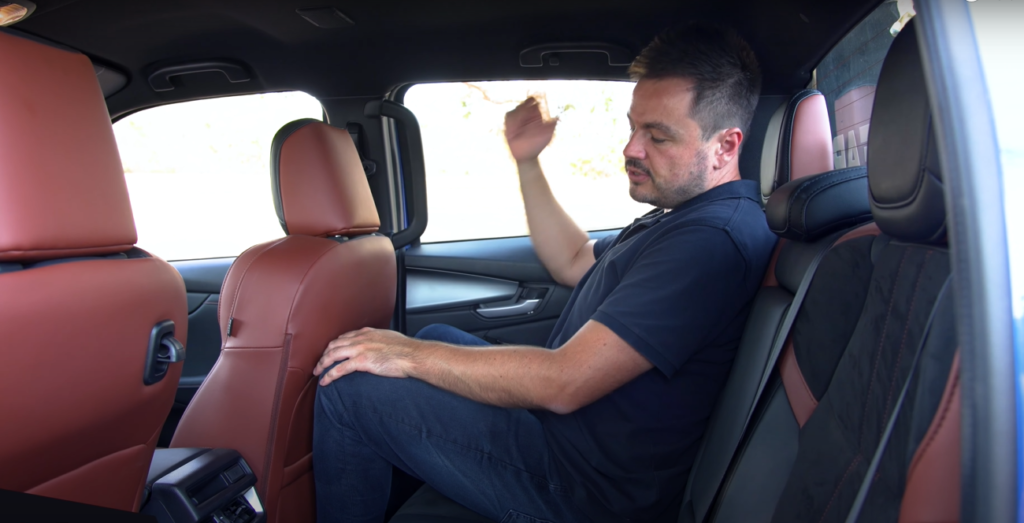
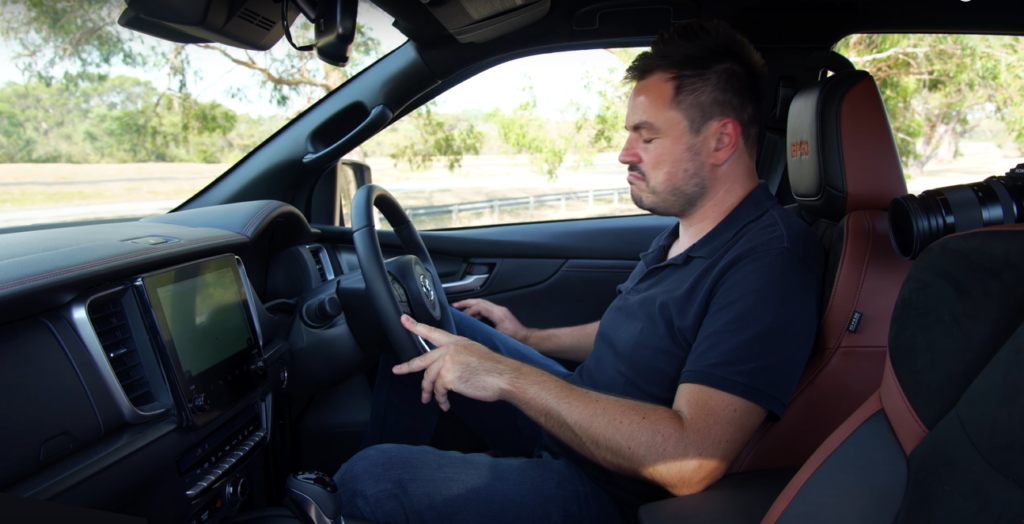
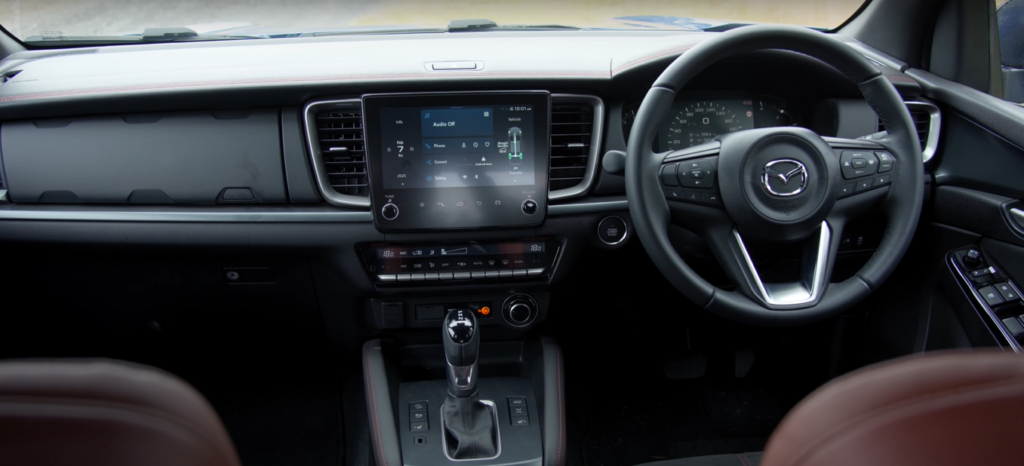
- Interior Upgrades:
- 9-inch Infotainment Screen: Now with physical knobs for volume and tuning (a big win over steering wheel controls alone). It supports wireless Apple CarPlay and Android Auto, and it’s snappy compared to the laggy older system.
- 7-inch Driver Display: A mix of analog and digital gauges. It’s functional but feels a bit dated for a top-spec model—rivals like the Ford Ranger offer full digital setups.
- Practical Touches: Dual-zone climate control, heated front seats (though no perforations for hot days), USB-C ports, and two glove boxes (one stuffed with a massive manual!).
The infotainment system now shows off-road info like tire pressure and 4WD mode, which is handy for adventurers. However, there’s no wireless phone charging, and the semi-autonomous steering system isn’t great—it veers in and out of lanes too much. Still, the cabin is spacious, with decent rear legroom and thoughtful storage options like under-seat compartments and map pockets.
Performance & Engine Specs
The BT-50 continues to be powered by the 3.0-liter turbo-diesel four-cylinder engine, producing 187 hp (140 kW) and 450 Nm of torque. While these numbers aren’t class-leading, they are more than adequate for towing, hauling, and everyday driving. The 6-speed automatic transmission ensures smooth gear shifts, while the refined suspension setup enhances ride comfort.
Acceleration & Braking Tests
- 0-100 km/h: 11.1 seconds (marginally quicker than the previous model)
- 80-120 km/h Overtaking Time: 8.8 seconds (not the fastest but adequate for highway overtakes)
- 100-0 km/h Braking Distance: 43.5 meters (longer than expected, could be improved)
The BT-50 isn’t the quickest dual-cab ute on the market, but it delivers consistent performance. However, its braking distance is a bit on the longer side compared to its rivals.
On-Road Performance: How Does It Drive?
Under the hood, the 2025 Mazda BT-50 SP keeps the same 3.0-liter turbo-diesel four-cylinder engine from the Isuzu D-Max. It pumps out 140 kW (188 hp) and 450 Nm of torque, paired with a six-speed automatic transmission. While these numbers aren’t class-leading—rivals like the Ford Ranger and Toyota HiLux offer 500 Nm—it’s enough for most tasks.
- Driving Impressions:
- Acceleration: 0-100 km/h takes 11 seconds, and 80-120 km/h (overtaking speed) clocks in at 8 seconds. It’s not quick, and the transmission feels sluggish when you floor it.
- Fuel Economy: Mazda claims 8 L/100 km combined. Our test showed 9.6 L/100 km after mixed driving, including off-road stints. Expect higher numbers with a load or city driving.
- Ride Quality: On smooth roads, it’s comfy for a ute. At 130 km/h (Australia’s max speed limit), it gets bouncy, especially unloaded. Rough roads at 90 km/h are handled well, thanks to the leaf-spring suspension.
The steering is decent, and brakes feel solid, but the stability control is overactive, cutting torque too aggressively in corners. A “sport mode” like some competitors offer would help here. Road noise is typical for a ute—louder on coarse surfaces, but not unbearable with highway-terrain tires.
Off-Road Capability: Ready for the Rough Stuff?
The BT-50 SP isn’t just a pretty face—it’s built to tackle light off-road challenges. With 240 mm of ground clearance, a 30.4-degree approach angle, and an 800 mm wading depth, it’s got the specs to back up its 4×4 badge. We put it through some tests, and here’s how it fared:
- Off-Road Features:
- 2WD High Range: Fine for sealed roads, but traction control struggles on uneven terrain.
- 4WD High Range: Great for unsealed surfaces, with rough road mode limiting wheel slip effectively.
- 4WD Low Range + Rear Diff Lock: Ideal for tougher climbs, especially with rough road mode engaged.
- Hill Descent Control: Works, but it’s basic—manual gear selection gives better control.
- Test Results:
- Traction Test: In 2WD high, it couldn’t climb a small obstacle. Rough road mode in 4WD high made it a breeze—night-and-day difference.
- Hill Climb: Low range with a locked diff struggled initially on soft ground, but rough road mode saved the day again.
- Rock Crawling: Smooth suspension and good throttle modulation handled rocks well, with only a minor side-step scrape.
The BT-50’s off-road tech, especially rough road mode, is a standout. It’s not a hardcore off-roader like a Ranger Raptor, but it’s more than capable for weekend adventures.
Practicality: Payload, Towing, and Storage
For a dual-cab ute, the BT-50 SP offers solid practicality:
- Payload: Around 900 kg.
- Towing Capacity: 3,500 kg (braked) with the 3.0L engine (1.9L variants get less).
- Tray Dimensions: 1,530 mm long, 1,120 mm wide between wheel arches.
- Features: Hydraulic tailgate assist, manual tonneau cover, optional bike carrier.
It’s a shame the 1.9L engine lacks punch—hopefully, Mazda brings the updated version from Thailand soon. The tray is dusty from off-roading, so keep it closed when not in use!
Pricing and Value: Is It Worth It?
At $77,000+ for the SP trim, the BT-50 is pricey for what it offers. The base model at $36,000 is more budget-friendly, but you miss out on the premium features. Compared to the Isuzu D-Max, Toyota HiLux, or Ford Ranger, it’s competitively priced but lags in power and tech (no 360 camera or wireless charging). The design and comfort are its strongest selling points—perfect for lifestyle buyers over hardcore tradies
Author Section
About the Author: Paul Maric and the CarExpert Team
At CarExpert, we review every new car, debunk myths, and explore the latest tech to answer your car questions. Led by Paul Maric, we’re your go-to experts for advice and insights. Catch our videos three times a week on YouTube. Have feedback? Email us or connect on Facebook, Twitter, or Instagram. Follow Paul on Facebook, Twitter, or Instagram. Subscribe and let us know what you think—we’re here to grow with you!.
Prices start at $36,000, with the top-spec SP at $77,000+.
Yes, with 240 mm clearance and rough road mode, it handles light off-roading well.
Updated grille, infotainment with knobs, and wireless CarPlay/Android Auto.

